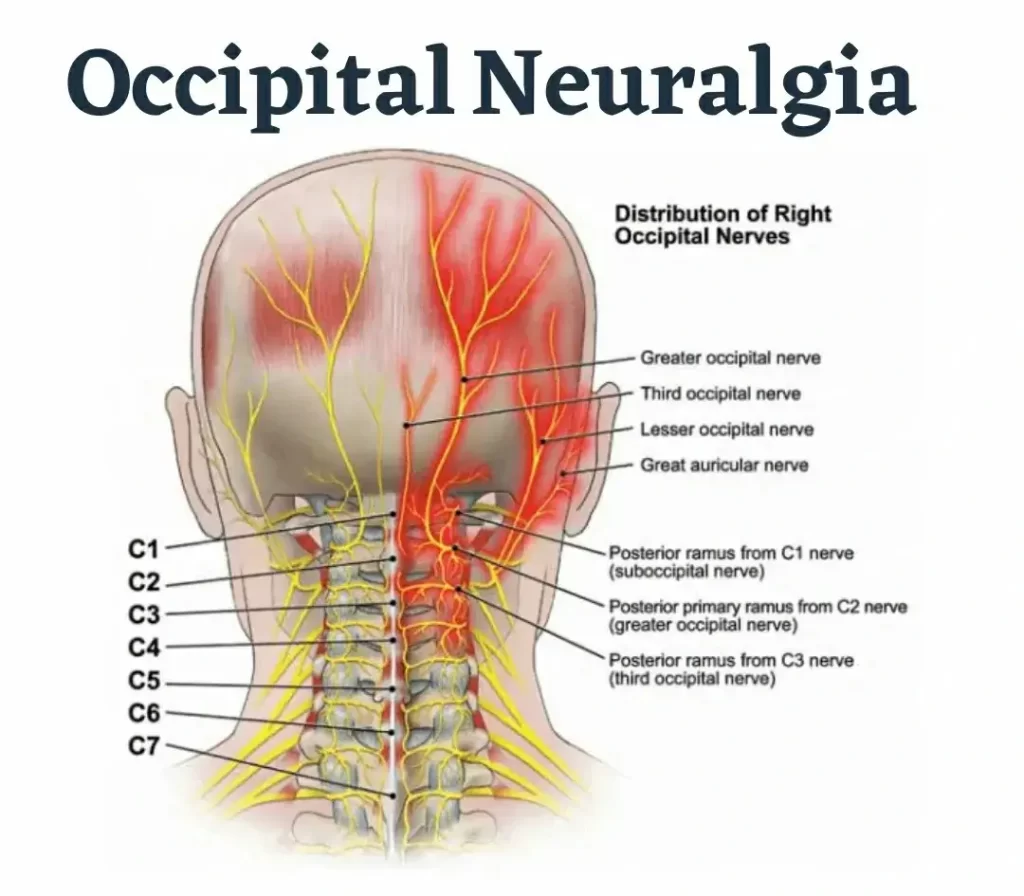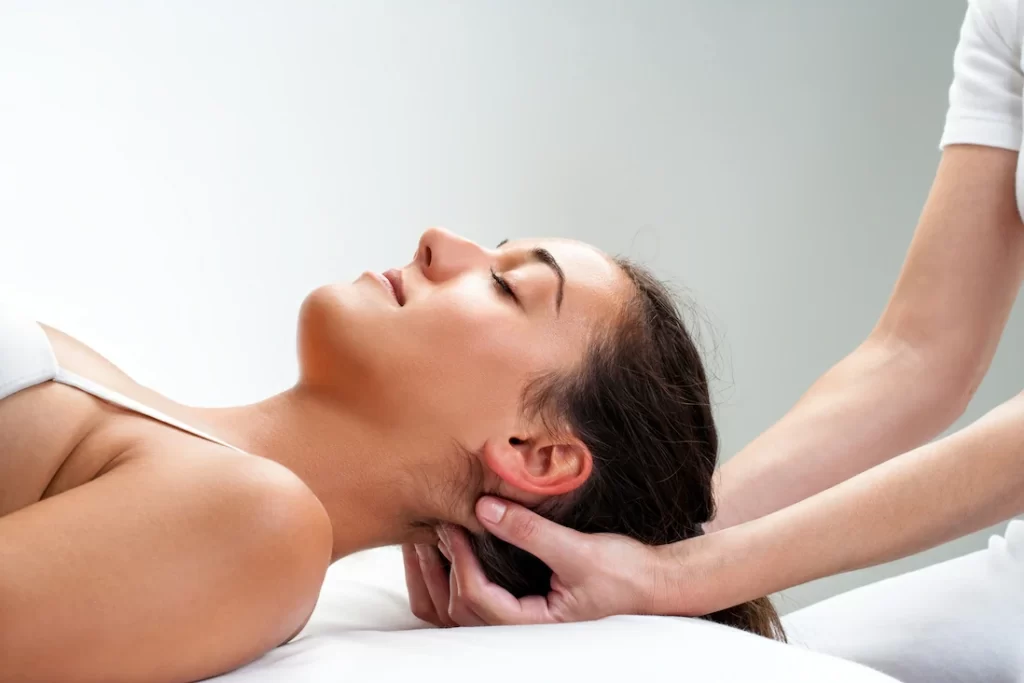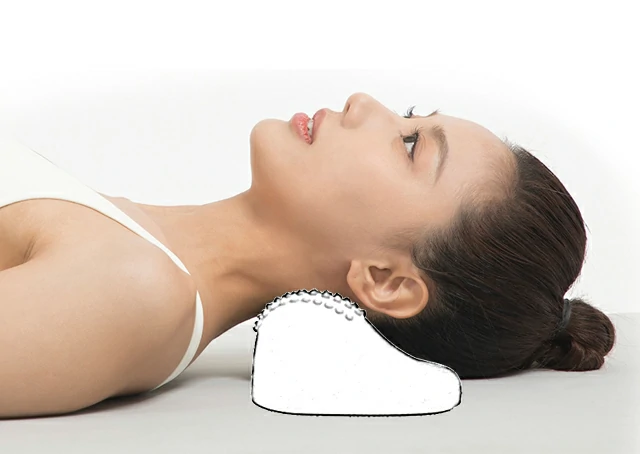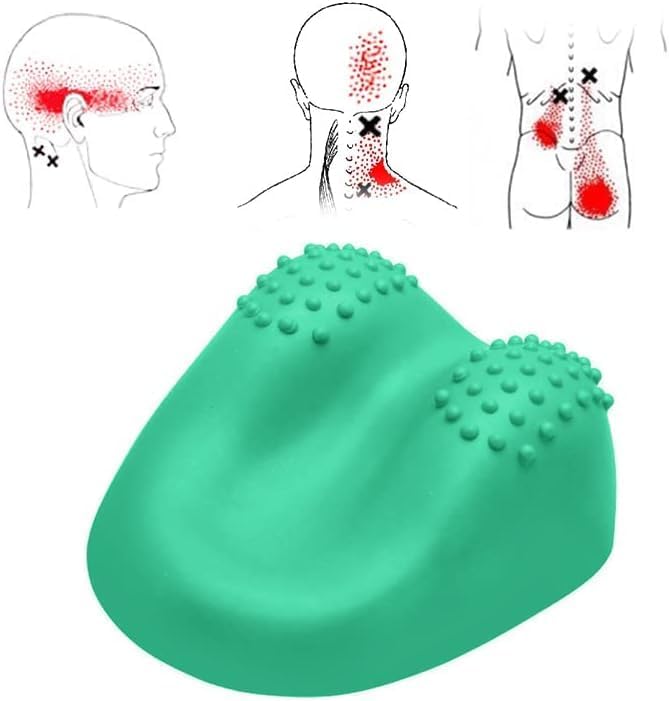Many people experience headaches behind the skull and eyes. But don’t worry! In this blog post, I will share some fantastic self-care techniques that you can use to address this issue yourself.

All about Occipital Neuralgia
Occipital neuralgia also called Arnold’s neuralgia, stems from the largest occipital nerves located at the base of our skulls.
When certain imbalances or changes occur in the head and neck region, including the muscles in the shoulders and shoulder blades, the compression of these nerves can cause severe pain, tingling, or a burning sensation in the head and neck area. In severe cases, the pain can even radiate around the eyes and forehead.

What Leads to This Issue?
There are various reasons behind this issue, and some people, when experiencing this kind of pain, mistake it for a stroke. There are two main culprits for the occurrence of this condition:
1.Trauma: Various types of trauma, such as car accidents or sports injuries (wrestling, grappling), can result in vibrations or jolts to your head and neck, leading to damage and compression of the occipital nerves at any of the C1 to C7 vertebral joints.

2.Everyday Activities: One unavoidable and common cause is spending extensive amounts of time with our heads bent down.
Whether it’s studying or working on a computer, being engrossed in Netflix or social media platforms like Instagram or TikTok, or even doing household chores, gardening, or yard work – all of these activities put significant strain on the muscles around the head and neck, exerting pressure on the nerves and causing headaches.

If you don’t want to give up these activities either, continue learning about self-care techniques.
How Can You Relieve It at Home?
Stretching and applying pressure to specific points can help release the tension in the neck muscles and reduce pressure on the occipital nerves.

Here’s how you can do it:
Lift Your Head: Instead of shaking your head from side to side, which can aggravate symptoms, try lifting your head. You can also use a device called a Cranial Sacral Cradle that supports your head. Apply slight upward pressure and massage the trigger points to release the compression on the occipital nerves. The effect is similar to when a massage therapist targets your occipital area.

Chin Tuck: Perform a chin tuck by tightening your chin muscles and holding it for 10 seconds. Then, lift your chin and hold for another 10 seconds. Repeat this exercise for a total of 3 minutes.
Slow Head Rotation: Gently rotate your head to the right, allowing the muscles on the left side of your neck to relax. Hold this position for 10 seconds and then rotate your head to the left. Repeat this exercise for 2 minutes.
When you feel fatigued, you can always use the Cranial Sacral Cradle
without any limitations on daily usage.

Don’t let skull pain hold you back. With these amazing self-care techniques, you can take control of the situation and find relief from Arnold’s neuralgia. Say goodbye to the pain behind your eyes and experience the freedom of a pain-free head and neck.